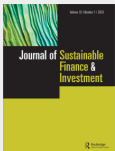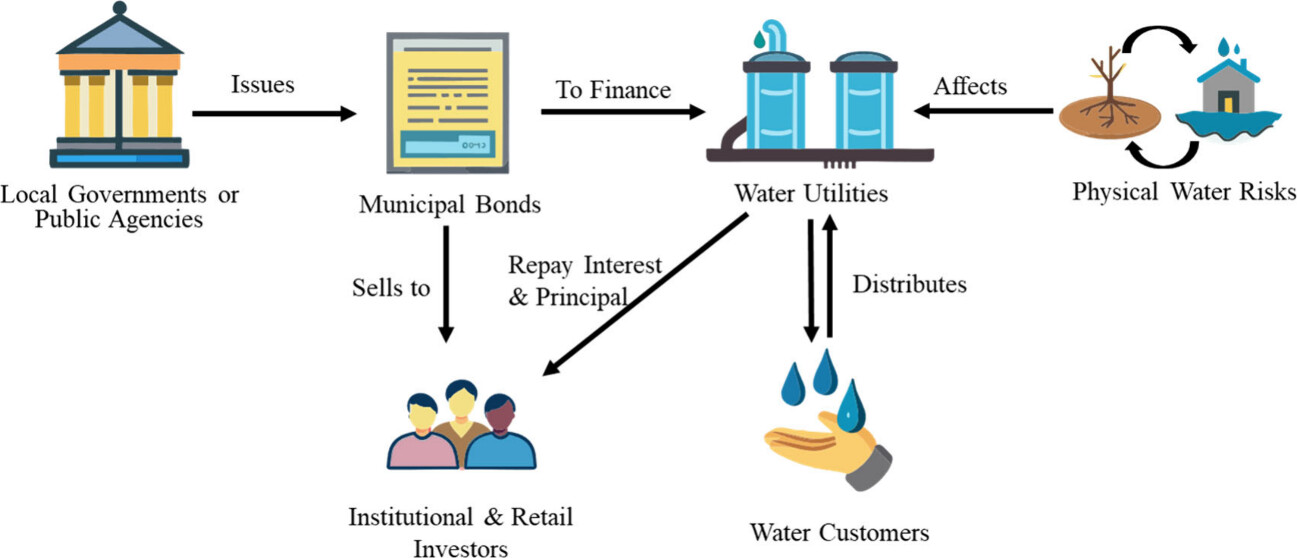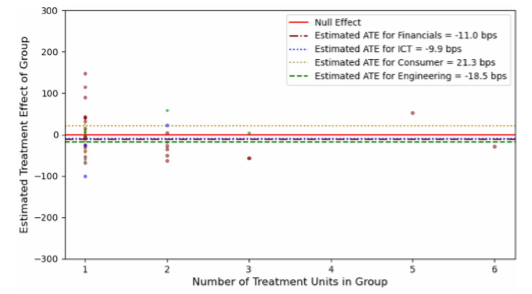publications
publications by categories in reversed chronological order. generated by jekyll-scholar.
2025
-
 Empirical evidence of ESG premium in the US corporate bond market: a propensity score matching approachDan Li, Kenneth Chung, and Peter AdriaensJournal of Sustainable Finance & Investment, 2025
Empirical evidence of ESG premium in the US corporate bond market: a propensity score matching approachDan Li, Kenneth Chung, and Peter AdriaensJournal of Sustainable Finance & Investment, 2025This study aims to explore the connection between ESG scores and corporate bond performance, particularly credit spreads, by adopting a propensity score matching (PSM) approach, enabling a balanced comparison between a control group and one exposed to the ESG treatment effect. The results indicate that bonds issued between 2010 and 2020 by MSCI-rated ESG leaders across all industry sectors are priced at an average lower credit spread of 14.3 basis points (bps) relative to laggards, in the primary market. This credit spread difference persists in the secondary market and increases further when bonds of financial issuers are separated from non-financial sectors. In contrast, the impact of ESG disclosure on bond credit spread results is negligible. The willingness of investors to accept a discount on the credit spreads of a bond issued by highly rated companies offers potential incentives for broader adoption of ESG performance assessment.
2024
-
 Impact of Flooding and Drought Risks on the Cost of Bond Financing for Water UtilitiesDan Li, Romesh Saigal, and Peter AdriaensEnvironmental Science & Technology, 2024
Impact of Flooding and Drought Risks on the Cost of Bond Financing for Water UtilitiesDan Li, Romesh Saigal, and Peter AdriaensEnvironmental Science & Technology, 2024The global water cycle has experienced significant changes due to the interplay of climate shifts and human activities, resulting in more frequent and severe droughts and floods. These shifts have started to impact the operational efficiency of water treatment and delivery systems. This, in turn, has implications for the economic performance of these assets and the climate-impacted cost of their financing through the issuing of municipal bonds. Analyzing a decade of water bond data (2009–2019), this study offers empirical evidence for the impact of flood and drought risks on bond investor demand to offset water risks. The results reveal that bond markets factored in coastal flood risks between 2013 and 2019, adjusting by 3–6 basis points (bps) per risk score unit, and riverine flood risks from 2009 to 2013, with a 5–11 basis points increase per risk score unit. These effects were primarily driven by bonds issued in the Pacific Coast and Great Plains regions, respectively. In contrast, the pricing of drought risks in the bond market followed a more nuanced pattern. Additionally, we show the channeling effects of water consumption and investor perceptions of climate change on water risk pricing in the bond market. These findings have significant implications for water risk management in the public sector as regions with heightened water risk exposure are perceived as riskier by market participants, leading to a higher cost of capital for municipalities and water agencies.
-
 Deconstruction of ESG Impacts on US Corporate Bond Pricing: The Cost of Capital Benefits Across Industry SectorsDan Li, and Peter AdriaensJournal of Management in Engineering, 2024
Deconstruction of ESG Impacts on US Corporate Bond Pricing: The Cost of Capital Benefits Across Industry SectorsDan Li, and Peter AdriaensJournal of Management in Engineering, 2024The growing interest in the financial materiality of Environmental, Social, and Governance (ESG) ratings has prompted recent investigations into their risk pricing impact in the corporate bond market. The specific implications for the Architecture, Engineering, and Construction (AEC) industry have not been explored, as prior work has primarily focused on broad-based ESG integration. To fill this gap, our study employed an interpretable machine learning technique using a sample universe of U.S. corporate bonds spanning from 2010 to 2021 to estimate the impact of ESG ratings on corporate bond issuance spreads. The results revealed an average ESG benefit of 10 basis points across all sectors. However, it is important to note that the effects of ESG ratings on bond pricing demonstrate variation across sectors and individual ESG constituent ratings. Significantly, our findings show that social and governance ratings emerge as the primary drivers influencing bond issuance costs, whereas the impact of environmental scores is comparatively less significant. Within AEC-related industries, empirical data on the influence of ESG ratings indicate discounted pricing by the market is particularly channeled through environmental and governance scores. These findings emphasize the value-added impact of enhanced ESG performance on the cost of debt financing, presenting a financially material opportunity for operational and management decision-making. By adopting sustainable strategies to improve ESG performance, organizations in the AEC industry can potentially achieve lower costs of debt when issuing bonds to secure financing for construction projects. The managerial implications extend to policymakers, corporate managers, and creditors, as they all stand to benefit from the financial implications of ESG performance.